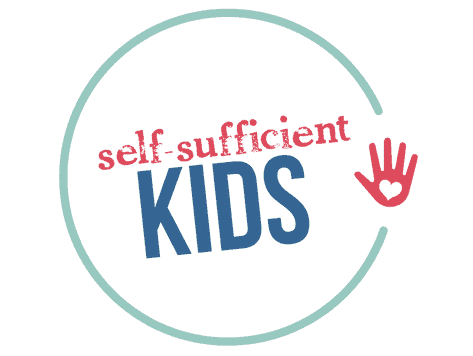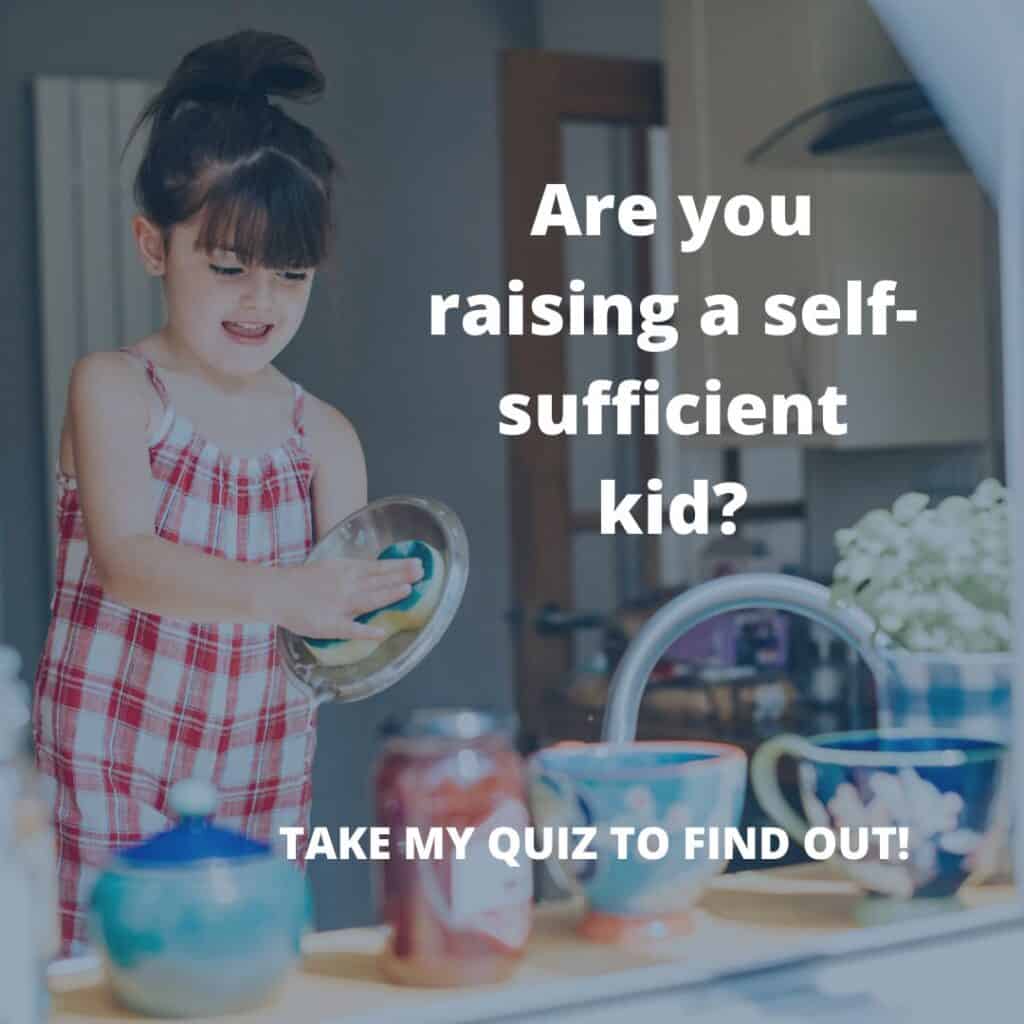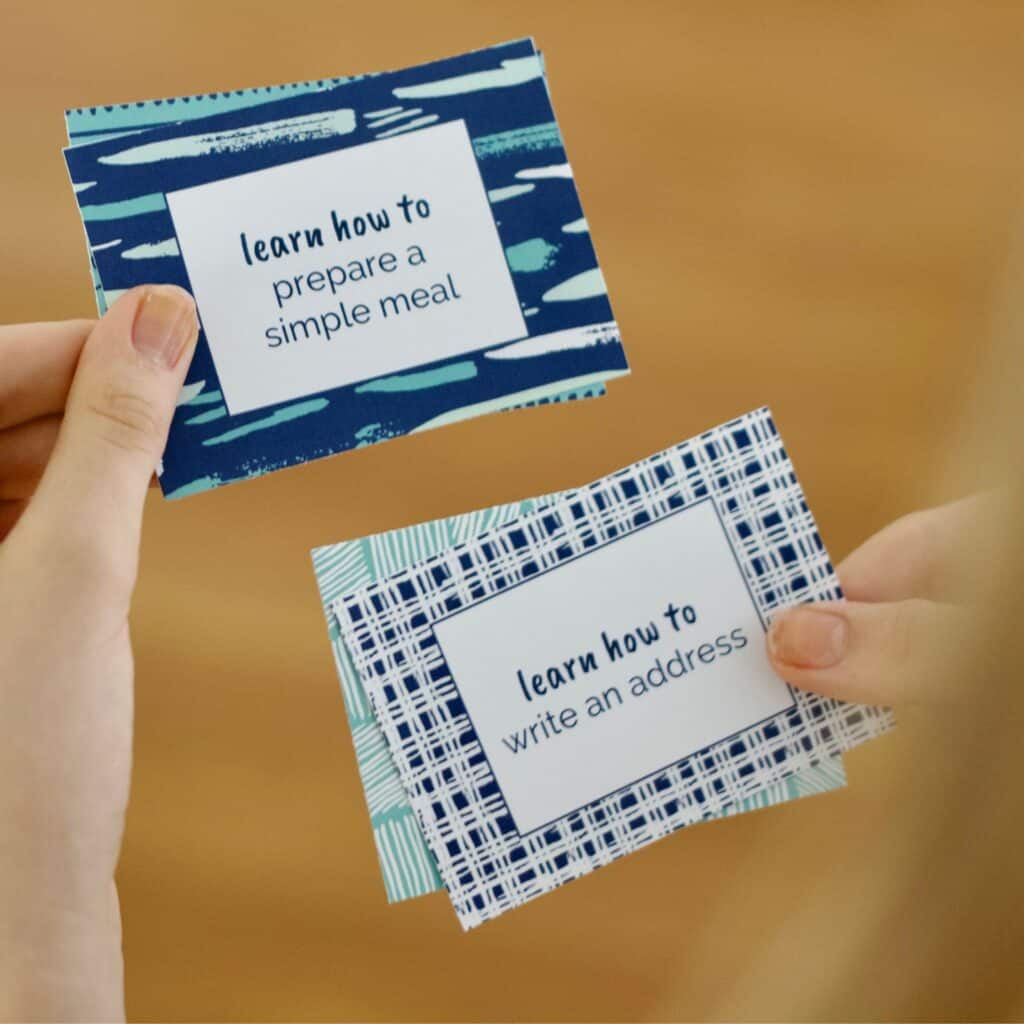How to Teach Kids to Do Their Laundry Independently
Teach your kids or teens laundry 101 with these basic steps.
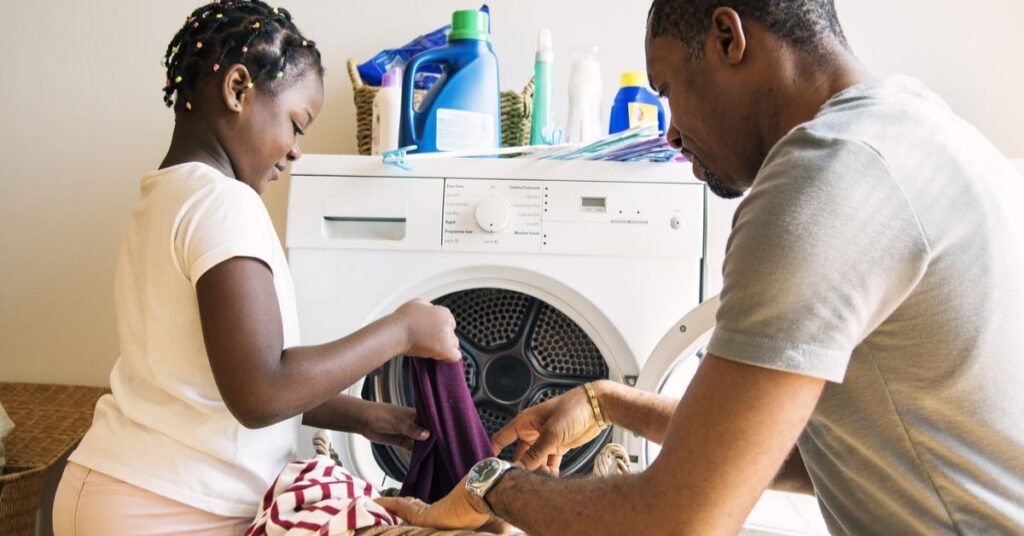
“Is this one dark?” my daughter said enthusiastically as she held up a pale blue shirt.
“No, that one’s more of a light.” I replied, a little weary after answering similar questions of light vs. dark clothing nine times in three minutes.
Two weeks prior, just after her tenth birthday, I’d taught my daughter how to do her own laundry.
And while she at first dragged her feet taking on this new chore, I could now tell she was feeling a bit more grown-up having been given this responsibility. This enthusiasm was coming through in trying to determine the light and dark clothes in her laundry basket.
About four minutes later and thirteen more questions, her laundry was in the washing machine.
Teaching kids how to do their laundry independently accomplishes a few things at once:
- It teaches kids a skill they’ll need when living on their own
- It teaches children responsibility which is shown to help them academically, socially and later in their careers.
- It creates less work for you
But while you may be most motivated by that final point – less work for you – keep in mind that you’ll have to muster up a great deal of patience at first as your kids learn the steps needed to wash their own clothes.
Interested in getting your kids started on chores? My four-lesson course will teach you how to get started, avoid nagging & power struggles, and keep your kids motivated. Click here or the image below to learn more.
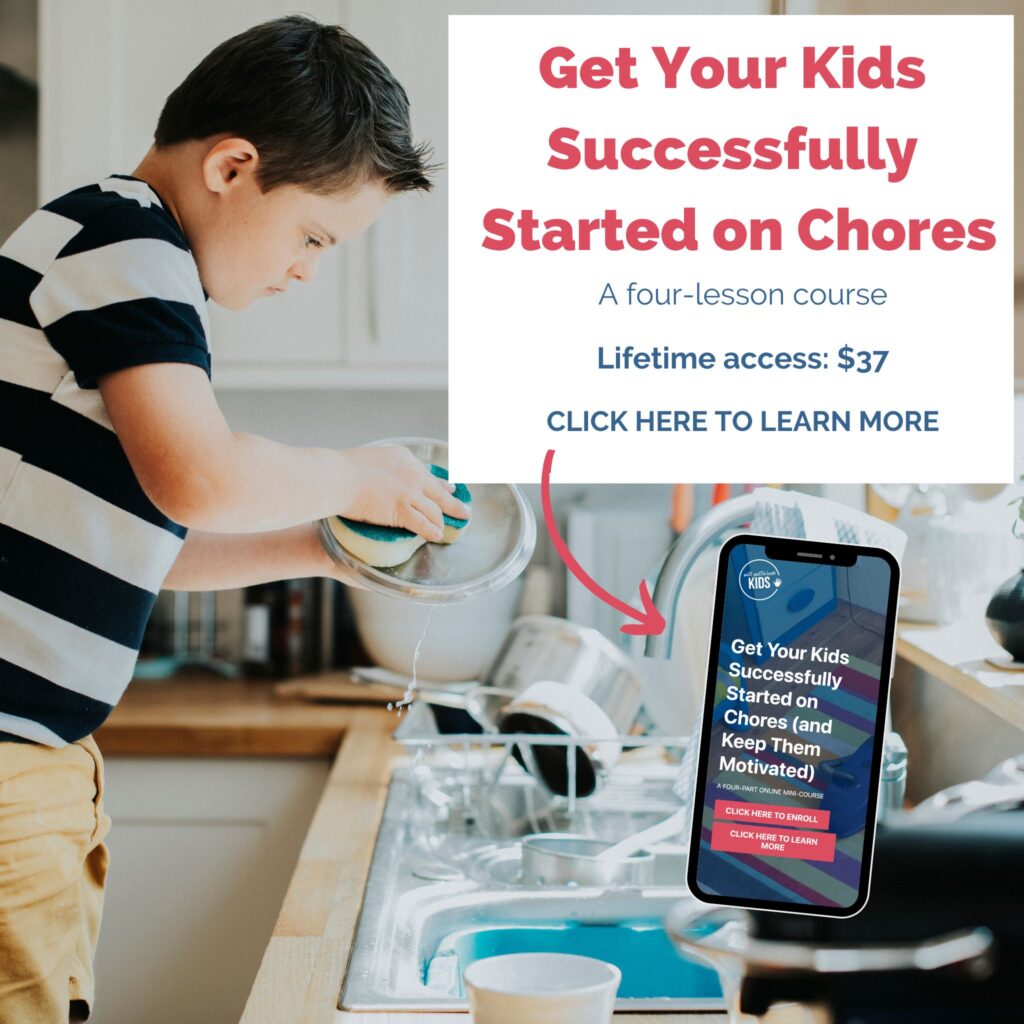
Here are a few points to keep in mind as you teach your children how to master laundry 101:
Step #1: Turn clothes right side out
Or inside out, depending on the fabric.
Kids, of course, are notorious for not turning their clothes right side out (such as the classic leaving a pair of underwear stuck between pant legs). But now that they’re responsible for their own laundry, perhaps (we can only hope) it will become more obvious why it helps to turn clothes right side out.
If kids don’t turn clothes right side out immediately after taking off clothes, it will need to be the first step before placing clothes in the washing machine. Of course, clothing with sequins and some delicate fabrics are better washed inside out.
Step #2: Read labels
The next step kids need to understand is the importance of reading clothing labels.
Labels tell a lot about a fabric – how it should be washed (dry cleaned or in the washing machine?), at what temperature (cold water or hot water?), whether it can be among other fabrics in the machine, and how it should be dried (tumble dried or air dry?).
It’s also important for kids to understand that some fabrics, like silks, rayons or nylon need to be dry cleaned instead. But even if they can’t identify these fabrics, the tag should let them know if dry cleaning is necessary.
Finally, some labels suggest the clothing item, such as some wools or delicates, should be hand washed in the sink or a small tub. These garments can be placed in a pile to be cleaned individually while the washing machine is running.
If you’re interested in giving your kids a full tutorial about how different fabrics should be treated, check out this list.
Step #2: Sort laundry by colors
Maybe, like most people, you think this step can be ignored. Or maybe you know it shouldn’t be ignored but you’re happy living in denial.
No matter where you stand on sorting clothing by colors, it’s a good idea to teach kids the basics so they won’t end up with the proverbial red sock dying their white shirts.
True sticklers of clothing sorting not only sort by color, but also by fabric, and heavily stained items are best washed alone. Click here to see a full explanation of the best way to sort laundry.
Step #3: Pre-treat stains
Getting kids to recognize when a stain has occurred is often a challenge onto its own. And there’s a strong possibility that more than a few stains will go untreated.
But it’s clearly important to explain the basics of stain removal to your child as you teach them to do their own laundry. Not the least of which is that the best time to treat a stain is right after it occurs.
This stain removal chart from Real Simple magazine is one option to help kids navigate the complex world of stains. But the truth is, especially at the beginning, the best tactic may be to have your child bring their stained clothing to you so you can give them advice about specific stains.
Step #4: Load clothes in the washer and pour in laundry detergent
The next step – loading laundry into the washing machine – may seem like a simple one, but beware that kids will be tempted to overload the machine.
Your child will need an explanation of just how many clothes they should place in the machine without them being crammed in (because trust me, your children will be inclined to cram as much in as they can).
Once that step is complete, demonstrate to kids how to measure the correct amount of detergent they’ll need for their load – whether using powder detergent or liquid detergent. And unless it’s obvious, they may also need to be guided to the correct place to add the detergent on your machine.
Step #5: Understand washing machine settings
This next step feels like the grown-up one for most kids as they’re finally able to understand and use a washing machine on their own.
Washing machine settings, of course, differ by machine but most include options for regular cycle, permanent press, and delicate cycle. If you have any questions about washing machine settings, this list should help.
Step #6: Sort wet clothes
Once the washing cycle is complete, it’s time to dry clothes. But not all clothes can go into the dryer.
Be sure to explain to kids that anything with elastic, made with a delicate fabric or a fabric that recently had a stain on it is best air-dried.
Step #7: Begin dryer, but watch settings
Once all the dryer-appropriate laundry is in the dryer, explain to your child that it’s always best to check the lint filter and clear it. This is a protection against a potential dryer fire.
Next, explain the tumble dry settings to your child – when it makes sense to use high heat, medium heat and when not to, and for how long clothes should be dried. And if you’re a family that uses dryer sheets, now would be the time to add them.
Step #8: Fold and put away laundry
While you may not be perfect at folding and putting away your laundry right after it comes out of the dryer (hand raised here!), it’s worth it to let kids know the benefits of this practice.
Also helpful is a quick tutorial on the best way to fold certain items. Underwear and socks, for example, can be tricky and it may take kids a few times to practice folding these items before they get them right.
If you know realistically your child won’t put his or her clothes away immediately, this would be a good time to set an expectation, say one or two days, before all clothes should be put in their proper place.
Ready to teach your child life skills? These cards can help! Each card in this eighty-one deck contains a skill your child can begin practicing with you or on their own. Click here or the image below to learn more.
See related:
15 Life Skills Kids Need Before They Leave Home
How to Get Started on Kids Chores – The RIGHT Way
How to Raise Responsible Kids Who Want to Help
What to do next…
1. Subscribe to Self-Sufficient Kids’ email list.
Like what you read here and want to learn more? Every Thursday I’ll send you one parenting tip about raising self-sufficient kids and creating the peaceful relationship you yearn to have with your child. Click here to sign up.
2. Take one of my quizzes!
Find out if you’re raising a self-sufficient kid (click here) or if you’re doing too much for your kids (click here). At the end of each quiz, you’ll be asked to provide your email address to see the results.
3. Get your kids started on chores.
Learn how to get your child started on chores (& keep them motivated + avoid power struggles) by enrolling in my Get Your Kids Successfully Started on Chores course. Click here to learn more and sign up.

About Kerry Flatley
Hi! I’m Kerry, the mother of two girls and a certified parent educator. I believe it is possible for parents to have a supportive, loving, and warm relationship with their kids while raising them to be independent and ultimately self-sufficient. Over the years, I’ve read numerous books and articles that support this belief and I’ve put these ideas into practice with my own kids. Read more about me and Self-Sufficient Kids here.
